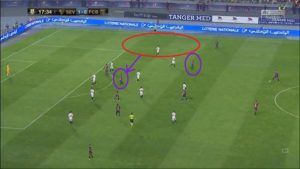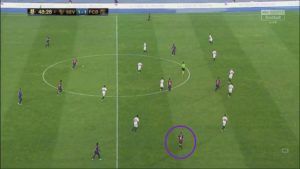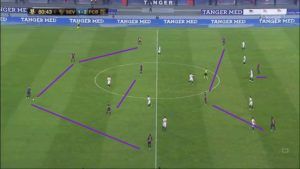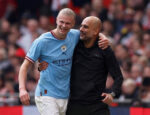Lionel Messi
I mention Messi first and in a category of his own because of how influential he is to Barcelona’s overall tactics. Reminiscent of the Luis Enrique era, he started nominally in the right wing position. As we know he loves to drift deep into the midfield. There, he played his usual role of free-roaming playmaker, with the disadvantage of leaving the right flank open and the team lopsided. In the previous season, Valverde built the 4-4-2 formation out of the desire to have Messi starting in a central position. It seems, for now, this approach has been abandoned. We will mention further on how this affected the tactics of the match.
Starting Formation

Defense
Tactically speaking, it was the back four doing their usual thing, playing a high line with the wing backs pushing up. On the right side, Semedo had to make up for the lack of a real winger, as Messi would often shift into the middle. He also had the more offensive-minded Rafinha on his side of the midfield. This forced Semedo into a cautious game, as he did not enjoy the presence of a wide player to support and be supported by. He was unable to provide much support in attacks as a consequence. Much in contrast, Alba on the left was able to go forward more freely, as the presence of Dembele and Arthur gave him the support to do so.
Midfield
Busquets played his usual role, dropping into the back line to assist build-up, linking with the interiors in transition, and shielding the midfield during attack.
Arthur played the controlling midfield role, starting from a left interior position but given license to roam and dictate the midfield. His movement was key to linking Barca’s play, constantly moving around to pick up balls and distribute.
Rafinha was positioned as a right interior and played the creative midfield role. Overall, he solved the play favorably when the ball came to him, but he struggled tactically. Because of Messi’s tendency to drift inside, Rafinha was supposed to cover the right-wide areas, like a false interior drifting outward and switching positions with Messi. But he failed to do so. Example as below.

When he did go wide, perhaps due to being over-cautious, he rarely did so in advanced positions. Because of this, it was usually left to Semedo to provide the depth out wide. Having little support in advanced positions and the responsibility of an open flank behind him, he was constantly forced to play back or put in a hasty cross.
Rafinha’s bad positioning meant he received the ball infrequently, and he ended up failing to get involved much in Barcelona’s build up play. When Rakitic came on in the second half, the change was very noticeable. He is used to covering for Messi on the right side from the Luis Enrique days, so he understands the role perfectly.
Attack
Dembele started on the left wing and played there most of the game. Unlinke Rafinha, he had the tactical awareness and composure to maintain his positioning, allowing the play to develop into his zone naturally. The presence of an actual winger on the left side meant there was plenty of linkup between him and Arthur, Messi and Alba. Most of Barca’s danger in the first half came from the left side as a result.
Suarez played his traditional center forward role.
Second half
Rakitic was a game changer when he came on. As soon as he entered the pitch, he immediately got to work, linking up play with the midfield during build up and providing support to Messi and Semedo in attack. When Messi drifted inside, Rakitic was there to cover for him on the wing, and they would switch positions like that throughout the game.

His presence gave Semedo the confidence to go forward more freely. This left Barca temporarily lacking a creative midfield role, but that was solved shortly after when Coutinho came on, who dominated the attacking play in the midfield along with Messi, while Rakitic did the dirty work.
Then, around the 75 minute mark, there was a change. The team shifted to a 4-2-3-1 with Busquets and Rakitic doing a double pivot, Coutinho on the left, Dembele on the right and Messi in the middle.

We can see Luis Suarez receiving the instruction from Valverde, and then conveying it to the team.
From a tactical point of view, this was when Barca felt most cohesive playing as a unit, with everyone in their natural positions. It will be interesting to see more of this version of the team.
- This post was first published on r/barca by Barca Tactics









Recent Comments